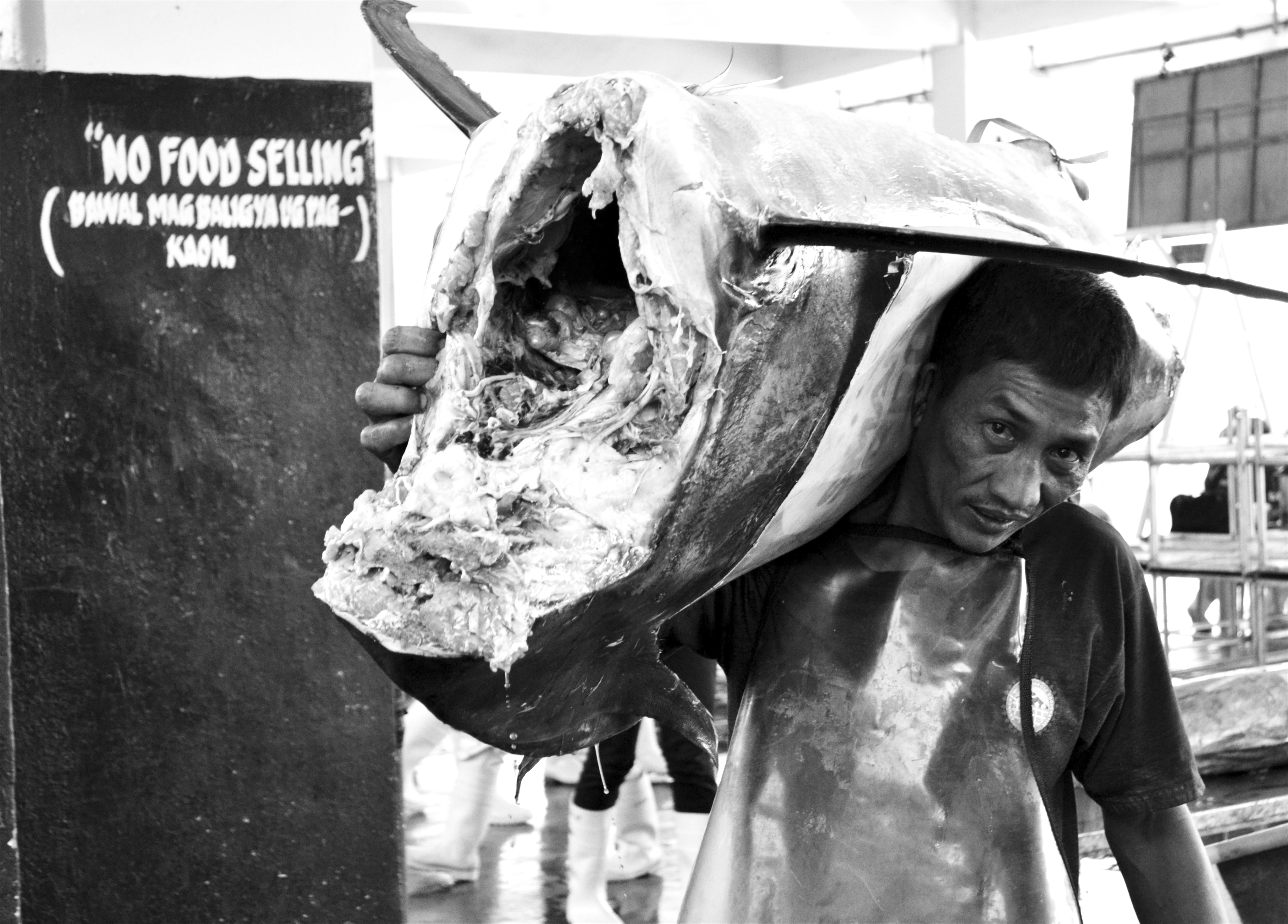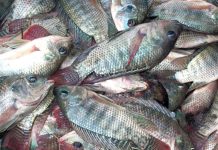 With fish fast disappearing from food tables, there is no better way but to develop the country’s coastal and oceanic aquaculture for food security and livelihood generation, suggests a paper that was presented during the 40th Annual Scientific Meeting of the National Academy of Science and Technology (NAST).
With fish fast disappearing from food tables, there is no better way but to develop the country’s coastal and oceanic aquaculture for food security and livelihood generation, suggests a paper that was presented during the 40th Annual Scientific Meeting of the National Academy of Science and Technology (NAST).
The paper, authored by three respected Filipino scientists – Rafael D. Guerrero III, Eufemio T. Rasco and Porfirio M. Aliño – considered aquaculture as the “fastest growing food-producing sector in the world.”
Aquaculture, the farming of fish, crustaceans, molluscs, aquatic plants, algae and other marine organisms, is growing at an average rate of 8.8% annually. It is “expected to overtake capture fisheries production by 2020,” the paper said.
“Aquaculture, not the Internet, is the most promising investment opportunity in the 21st century,” pointed out Peter Drucker, an Austrian-born American management consultant, educator, and author, whose writings contributed to the philosophical and practical foundations of the modern business corporation.
If only the Philippines will pursue this option, its economy may definitely improve. After all, it is an archipelago with more than 7,000 islands. It has 18,500 kilometers of coastline, 26.6 million hectares of coastal (inshore) waters, and 193.4 million hectares of oceanic (offshore) waters. In addition, the Philippines has a total land area of 30 million hectares.
In 2017, the Philippines produced 4,317 million metric tons of fishery and other marine products. More than half (51.9%) came from aquaculture, the remaining 48.1% was from capture fisheries (inland and marine).
Major aquaculture products include seaweeds (62.5%), milk fish or “bangus” (18.6%), tilapia (11.9%), tiger prawn (2%), oyster (1%) and mussel (0.08%).
“Fish is the primary source of protein of animal protein in the diet of Filipinos with per capita fish consumption of 34.1 kilograms,” said Guerrero, lead author of the paper and former executive director of the Philippine Council for Aquatic and Marine Research and Development.
“Fish, which used to be among the cheapest sources of protein, is now more expensive than pork or chicken,” said Senator Loren Legarda, who filed Senate Bill No. 242, or “An Act Creating the Department of Fisheries, Providing for its Powers and Functions, and for other Purposes.”
“The States is now called upon to perform its task to ensure sufficient food supply to millions of Filipinos through the development of the vast potentials of Philippine fisheries,” Legarda pointed out.
In 2008, the Philippines ranked sixth in global fish and aquaculture production. Twenty-three years earlier, in 1985, the country was listed number four. Next to China, the Philippines was the second largest seaweed producer in the world.
“These figures suggest we are rich in fisheries and coastal resources as a nation, and yet, hunger affected 4.5 million families in the last quarter of 2011,” Legarda pointed out. “This alarming irony becomes even more glaring in the fact that while we are rich in fisheries and coastal resources, among the poorest in our country are coastal communities with 4 of 10 coastal residents living under poverty line.”
During his time, Jules Verne – the French author noted for his scrupulously researched adventures novels like Twenty Thousand Leagues Under the Sea – suggested that when the world reached the limits of food production on the land, man could turn to the oceans.
“Oceans cover nearly 71% of the earth’s surface, and their deepest trenches plunge farther below sea level than Mount Everest climbs about it,” writes Peter Weber, a researcher with the Washington, D.C.-based Worldwatch Institute. “They contain 97% of the water on earth, and more than 10,000 times as much as all the world’s freshwater lakes and rivers combined.”
From the objectivity of space, the earth is overwhelmingly composed of water. This must be the reason why earth is sometimes called as a “blue planet.” The oceans are described as “the lungs of the earth.”
“They produce about 70% of our oxygen supply and absorb more than 50% of carbon dioxide from man-made sources,” Guerrero said. Carbon dioxide is one of the main greenhouse gases that is blamed for the current warming of the planet.
The oceans provide many ecological services like climate regulation, ocean energy, and tourism. They are used as transport route for 80% of the world’s goods. They are “the last and most unexplored frontier on earth.”
But oceans are valued most for the food they produce. “They are the primary source of protein for 3 billion people,” Guerrero said, referring to fish and marine resources.
“Fish protein is generally recognized as a valuable ingredient in a balanced diet,” Veravat Hongskul, when he was still the regional fishery officer of the UN Food and Agriculture Organization (FAO), told this author. “It is of high biological value and contains essential amino acids not normally found in staple food.”
Because of this, there was a boom of fish consumption all over the world. “Between 1950 and 1989, the fish catch expanded more than four-fold, climbing from 22 million tons to 100 million tons,” Lester R. Brown reported in his report, Facing Food Scarcity.
It was just a matter of time the world was facing another problem: overfishing. Weber, in his book, Net Loss: Fish, Jobs and the Marine Environment, wrote: “Overfishing is the primary cause of dwindling fish population.”
In Southeast Asia, where the Philippines is part of, “nearly all waters within 15 kilometers of shore are considered overfished,” said Dr. Edgardo D. Gomez, of the Marine Science Institute of the University of the Philippines at Diliman.
“We are running out of fish and running out of time. For a country known for marine biodiversity, there are very few fish left to catch,” Vince Cinches, Oceans Campaigner for Greenpeace Southeast Asia, was quoted as saying.
A few years back, a study was conducted at the Davao Gulf, with has a total area of 308,000 hectares. The World Wildlife Fund for Nature considers Davao Gulf as one of the most diverse marine ecosystems in the world.
The decade-study – a collaborative effort of the Bureau of Fisheries and Aquatic Resources (BFAR), local government units and the regional office of the Department of Science and Technology – looked at the volume and quality of the harvests of 10 commonly fished species in the gulf: matambaka, tamban, moro-moro, caraballas, bilong-bilong, lapu-lapu, danggit, molmol, talakitok, and maya-maya.
Except for maya-maya, the harvest numbers for the species have been falling. At the current rate of decline, the caraballas, bilong-bilong, molmol, and danggit may all disappear completely from Davao Gulf within a decade, the study said.
The matambaka, tamban and moro-moro are more resilient, but even they may disappear within a generation, it added.
One of the best ways to produce more fish is to raise them just like livestock. This is doable and sustainable by means of aquaculture. In Asia, aquaculture has taken a new role in fisheries. Off the coast of the Solomon Islands, cultivation of giant clams has begun in earnest.
In the Philippines, the concept of mariculture park – similar to an industrial or science park on land – came into existence. In 2001, the first mariculture park was introduced by the Bureau of Fisheries and Aquatic Resources (BFAR) in the coastal waters of the Island Garden City of Samal with demonstration of floating cages for milkfish culture.
Not far from Samal is the Panabo City Mariculture Park (PCMP), which was established in 2006 with partnership of the city government and the Department of Agriculture, particularly BFAR.
According to Dr. Guerrero, the city government unit provides local governance and regulations while BFAR provides technical and advisory services. To attract private investors, infrastructure facilities and support services were provided.
For sustainability, only four cages (100-square-meter each) are kept per hectare and regular monitoring of bottom sediment is done.
The total investment cost (from 2006-2013) was reportedly P467.6 million with P35.5 million coming from BFAR seed money, P21.5 million from the city government, and P72 million from the Land Bank of the Philippines in Davao. The bulk of the amount (P340 million) came from private entities.
Today, PCMP has been identified as one of the most developed mariculture parks in the country. It has an area of 1,075 hectares covering 3 out of 4 coastal barangays of Panabo City. Within those areas, 60 hectares are allocated for marine fish cage and 20 hectares for seaweed production.
As a result, PCMP has contributed food security to the city with 8,389.59 metric tons of fisheries with a value of P830 million. In addition, it has provided 514 jobs to the community.
Indeed, there is a bright future for aquaculture. “The ultimate success of aquaculture may lie in the ability of its developers to leapfrog the mistakes of agriculture – to resist putting chemicals in the water and hormones in fry, and consuming vast quantities of resources to get their products out,” suggests Anne Platt McGinn, another researcher at Worldwatch Institute. “The fish farmers’ ticket to the future is to align their business with the growing movement toward integrated, closed-loop production that is already making waves in the agricultural and timber industries.”






